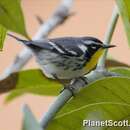zh-TW
在導航的名稱


A medium-sized (5-5 ½ inches) wood warbler, the Yellow-throated Warbler is most easily identified by its gray back and head, yellow throat, and streaked flanks with a conspicuous black and white eye-stripes. The similarly-patterned Magnolia Warbler (Setophaga magnolia) also has streaked flanks, but is darker above and more yellow below. Male and female Yellow-throated Warblers are similar in all seasons. The Yellow-throated Warbler breeds across much of the eastern United States from Pennsylvania south to the central Florida and west to Texas. Within that range, this species is mostly or completely absent from higher elevations in the Appalachian Mountains. In winter, Yellow-throated Warblers may be found in the coastal southeast, south Texas, the West Indies, Mexico, and parts of northern Central America. Yellow-throated Warblers breed in a variety of woodland habitats, especially those containing Loblolly Pines (Pinus taeda). In winter, this species may be found in similar pineland habitats in the southern U.S. and in the tropics. Yellow-throated Warblers primarily eat small invertebrates, including insects and spiders. In appropriate habitat, Yellow-throated Warblers may be observed climbing on high sections of tree trunks while foraging for insects. Birdwatchers may also listen for this species’ song, a series of “te-ew” notes dropping in pitch at the end. Yellow-throated Warblers are primarily active during the day, but, like many migratory songbirds, this species undertakes part of its migration at night.